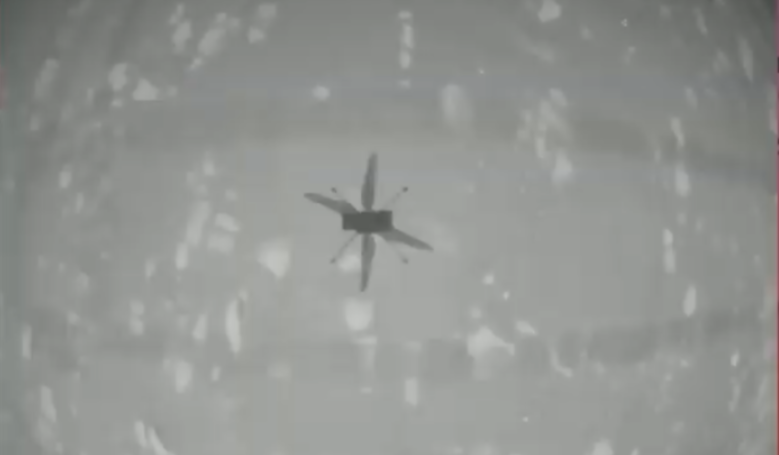NASA’s small but mighty Mars’ helicopter, Ingenuity, has successfully completed the first ever powered, controlled flight on another planet.
Teams back on Earth had to wait over three hours for data to be returned to the control room from Mars to learn whether the flight had taken place or not.
Streaming the event live from a control room in California, flight controllers advised that downlinked data had started to arrive and looked nominal at around 10:39 GMT.
Less than 10 minutes later they confirmed, “we received helicopter data product. We unpacked image and one hertz data." This was followed swiftly with confirmation that battery data had been received.
All the data looks healthy, the mission team said.
After a few minutes anxious wait, applause erupted in the control room when it was announced that telemetry data showed Ingenuity had performed spin up, take off, climb, hover, descent, landing, touchdown, and spin down.
“Ingenuity has performed its first flight — the first flight of a powered aircraft on another planet!" NASA tweeted.
With an atmosphere around 100 times thinner than Earth’s, getting airborne on the Red Planet is no easy task. Ingenuity’s blades have to spin at a staggering 2500 rpm in order to lift the 1.4 kilogram craft above the martian surface. For comparison, helicopter blades on Earth typically spin at around 400 - 500 rpm.
NASA's Perseverance rover was on hand to record the event and video footage returned to Earth showed the craft rise to about 3 metres, hover, swivel and then land.
"We can now say that human beings have flown a rotorcraft on another planet," said MiMi Aung, project manager for Ingenuity at Nasa's Jet Propulsion Laboratory in Pasadena.
Ingenuity’s initial flight demonstration, which lasted less than a minute, was autonomous – piloted by onboard guidance, navigation, and control systems developed by the team at JPL.
Its success was hailed as a Wright Brothers moment, and indeed Ingenuity carries a bit of wing fabric from the 1903 Wright Flyer, which made similar history at Kitty Hawk, North Carolina.
“We have been thinking for so long about having our Wright brothers moment on Mars, and here it is,” Aung said. “We will take a moment to celebrate our success and then take a cue from Orville and Wilbur regarding what to do next. History shows they got back to work – to learn as much as they could about their new aircraft – and so will we.”
Over the next three sols, the Ingenuity team will analyse all of the data and imagery from the test and formulate a plan for the second experimental test flight, scheduled for no earlier than 22 April, 2021. If the helicopter survives the second flight test, the Ingenuity team will consider how best to expand the flight profile.











